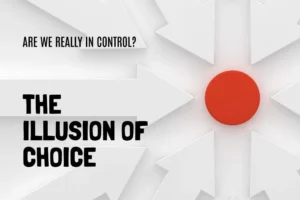Do you want to know more about how your intrinsic motivation affects choices and behaviors in daily life? Cognitive Evaluation Theory by Edward L. Deci explores this area of research in detail, discussing how the perception of autonomy and competence impacts motivation.
In this article, the reader will find out what Cognitive Evaluation Theory of Motivation is, how it works, possible examples, and its implications for sports and Education. By the end of this article, you will be empowered with knowledge to increase your perspectives of motivation and how you can apply it to your life.
Table of Contents
What Does Cognitive Evaluation Theory Explain?
Cognitive Evaluation Theory (CET) is one of the sub-theories of the self-determination theory, which was formulated in the mid-1970s. CET’s goal is to clarify why the use of external rewards such as money or praise can influence the intrinsic motivation of a person.
Father of Cognitive Evaluation Theory of Motivation
Edward Deci pioneered Cognitive Evaluation Theory of Motivation, and Richard Ryan played a significant role in its development. Their joint efforts have been pioneering in studying people’s motivation and the relationships between internal and external motivating forces.
Cognitive Evaluation Definition
Cognitive evaluation mainly relates to the mental process by which one evaluates behavior, experience, or performance that may affect self-images, goal setting, motivation, or emotions.
Cognitive Evaluation Examples
Here are three examples of cognitive evaluation in everyday situations:
- Job Performance: An employee assesses one of their recent tasks. If they feel their performance is successful, they might be encouraged to tackle more challenging responsibilities.
- Social Interaction: In a given case, an individual focuses on how he or she has been interacting with other people. It might indicate that through positive self-assessments, people develop more confidence in other similar interactions.
- Academic Achievement: This is when a student evaluates their performance after receiving the test outcomes. This feeling of competence might boost the motivation to study harder for the upcoming tests.
Related Reading: Cognitive Triad: Enable Growth with Essential Insights
Cognitive Evaluation Theory by Ryan and Deci
Key Principles of Cognitive Evaluation Theory

1. Intrinsic Motivation
Intrinsic motivation is the situation where one pursues an activity for the sake of it without any external rewards or punishments. CET suggests that intrinsic motivation thrives when three psychological needs are satisfied: autonomy, competence, and relatedness.
2. Extrinsic Motivation
On the other hand, extrinsic motivation refers to performing an activity to achieve some tangible reward that is separate from the activity itself, like money, commendation, or avoidance of reprimand. Extrinsic motivation can either positively or negatively impact students’ intrinsic motivation.
3. Psychological Needs
The CET theory posits that people universally need to feel autonomous and competent and that they belong or are connected to other people. All these needs must be met in order to achieve inherent motivation.
4. Contextual Factors
CET also points out that the environmental and social contexts are critical elements in motivation. Feedback received, rewards given, time pressure, and the general tone of independence or pressure can either enhance or decrease intrinsic motivation.
Two fundamental Components of Cognitive Evaluation Theory
Perceived Locus of Causality
This component relates to a person’s belief concerning the source of his behavior. It has been observed that when people do things of their own volition, there is a heightened sense of intrinsic motivation, for instance, when people believe they are acting for personal interest or specific values.
On the other hand, if they view extrinsic motivation sources, such as external rewards or time pressure, as the primary reason for engaging in a given activity, their intrinsic motivation may be adversely affected.
Perceived Competence

This aspect refers to the level of confidence an individual has in their capacity to complete a particular job or accomplish a given objective. When people are competent, they are likely to be intrinsically motivated because they are aware that they can handle different tasks and get the result they want, and vice versa.
Two Functional Components of Deci’s Cognitive Evaluation Theory
Informational Function
This component focuses on how environmental stimuli, including informational feedback and rewards, offer information that affects self-regulation of perceived competence and autonomy. Controlling feedback or controlling rewards that deny competence and reduce autonomy can unfavorably influence intrinsic motivation. However, positive feedback or rewards that promote competence and autonomy boost it.
Controlling Function
This component concerns the effects of extrinsic incentives or punishments, time limits, or other sorts of pressure on intrinsic drive. Intrinsic motivation decreases when people believe that factors in their environment compel them to act, not to encourage their self-determination. Consequently, how rewards and feedback are given or presented can help or harm motivation.
Related Reading: Information Processing Theory: Powerful Facts Exposed
Cognitive Evaluation Theory Example

For instance, consider a student passionate about painting and gets self-motivated to paint because he or she derives pleasure from drawing (intrinsic motivation). One day, their school comes up with a painting competition where the winner will be rewarded with cash (extrinsic motivator). According to CET:
- Impact on Intrinsic Motivation: The introduction of the cash prize could thus lead to a form of extrinsic motivation interfering with the student’s intrinsic motivation. If they regard the prize as controlling or contingent (i.e., they paint only the prize), their intrinsic motivation might be lower because painting is no longer intrinsically motivated but is painted instead for the sake of the award.
- Factors Influencing Motivation: Thus, the perceived locus of causality, what they might feel or think about the reasons for painting, and the perceived competence that might be increased or decreased by the extrinsic motivator will affect the intrinsic motivation in painting.
Self Determination Theory and Cognitive Evaluation Theory

CET is a psychological theory by Edward Deci and Richard Ryan, which is grounded in Self Determination Theory and thus provides expanded knowledge in Self Determination Theory about people’s motivation and well-being.
CET is also similar to Self Determination Theory of Motivation in that it focuses on intrinsic motivation and posits that autonomy is the key to human behavior. Both theories point to the need for autonomy, competence, and relatedness as the elements that can be key to intrinsic motivation and well-being.
The differences between CET and Self Determination Theory of Motivation broadly lie in the scope and focus of the theories. CET is a more detailed theory that focuses on feedback and external events regarding intrinsic motivation. At the same time, Self Determination Theory of Motivation offers a more general approach to different types of motivation ( intrinsic and extrinsic motivation ) and the role of social context in meeting psychological needs.
Related Reading: Snyder’s Hope Theory: Rise from Ashes to Glory
Applications of Cognitive Evaluation Theory

1. Cognitive Evaluation Theory in Education
CET is valuable in educational contexts. It can assist teachers in knowing how their teaching and feedback affect the student’s internalization. For instance, if a teacher offers praise in a way that is related to competence and autonomy, like noting improvement and letting the learner decide how to proceed, motivation and active involvement increase among students.
2. Cognitive Evaluation Theory in Organizational Behavior
In particular, CET is indispensable in the workplace for identifying problems beyond monetary incentives. For example, giving employees decision-making autonomy, perceiving the meaningfulness of the tasks they perform (task significance), and appreciating their leaders’ support affect their intrinsic motivation and satisfaction with their jobs. CET principles can be applied by organizations to design/promote work environments that positively impact employees and their productivity.
3. Cognitive Evaluation Theory in Sports
In sports, CET assists the trainers in knowing how a particular style of coaching and comments may affect the motivation of an athlete. It is becoming more apparent that athletes flourish where they are accepted and where coaches are sensitive to their self-organizational needs. Coaches that foster “mastery orientation,” or the notion of focusing on process and growth rather than, for instance, winning or losing, can improve athletes’ enjoyment and persistence during difficulties.
Related Reading: Understanding Cognitive Behavioral Therapy: A Comprehensive Guide
Limitations of Cognitive Evaluation Theory

1. Complexity of Motivation
Although CET provides essential information about the internal motivation that results from extrinsic incentives such as rewards and feedback, motivation itself is multifaceted. It is caused by different factors such as purpose, culture, social contexts and values, which CET fails to capture.
2. Overemphasis on External Factors
Some theorists opine that there is a danger of overemphasizing external motivation within CET and thus fail to consider the other intrinsic sources of motivation. This perspective may need to acknowledge the role that individual factors, including beliefs and goals, also exert considerable influence.
3. Cultural Variations
The generalizability of CET principles across cultures and contexts remains an issue of contention. First, motivation can always depend on cultural beliefs and practices within a community. It means that what satisfies or motivates people in a particular culture may not work the same way in other cultures.
4. Research Limitations
There have been concerns that much of the research already supporting CET is flawed by methodological problems such as sample size or the use of self-generated data. These problems can limit the reliability and generalizability of the CET findings.
5. Dynamic Nature of Motivation
In this context, motivation does not remain constant but varies based on the dynamics of goals, experiences, social contexts and situations. It is, therefore, possible that CET’s focus on specific moments of external feedback or reward is a less-than-ideal fit for the complex and constantly developing motivational processes that are at work within the context of learning.
Conclusion
Thus, CET is helpful in understanding the nature of intrinsic motivation and the effects of external context on the process. Initially developed by Richard Ryan and Edward Deci, CET seeks to explain the relationship between perceived competence, autonomy, and motivation. Awareness of its building blocks, namely intrinsic and extrinsic motivation, allows one to develop an approach for promoting engagement in one setting or another, for example, sports or learning.
Ryan and Deci’s Cognitive Evaluation Theory explains the relationship between intrinsic psychological processes and extrinsic motivators. Focusing on the long-term self-regulatory effects of intrinsic motivation, CET supports the design of approaches to promote autonomous motivation in individuals and organizations.
Pro-Tip From Basics of Psychology
Enhance intrinsic motivation by offering meaningful choices that align with personal interests and values. Providing autonomy within structured environments empowers individuals to cultivate genuine engagement and sustainable motivation over time.













